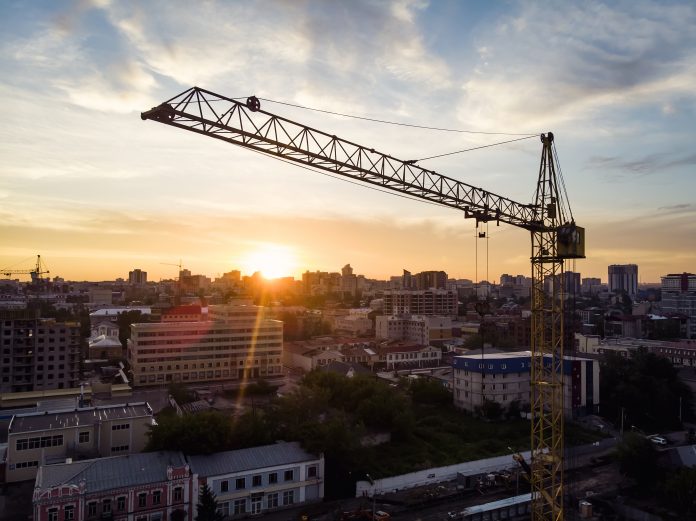With project growth in the construction industry expected to increase by 5% by the end of 2021, James Hepton at Actavo Direct looks at how businesses can reap the rewards of an industry on the up
A projected financial boost looks set to be the light at the end of the tunnel for an industry stifled by financial problems and under-digitisation. Industry profits had recently stagnated in the UK, with the biggest construction companies making a pre-tax profit of -0.5% and 56% of leaders citing it as the main reason for plateaus in growth.
Investing in key technologies
The development of AI, BIM, drone and robotics technologies is set to drive a positive push towards project and cost efficiencies and safety for those willing to invest.
BIM technology
BIM is revolutionising project management. Thanks to BIM technology, we can create 3D walkable models of projects that are kept in a common data environment (CDE).
All teams can access the file and update schedules, costs and resources in real-time – giving managers an overview of projects so they can adjust to ensure efficiency. This brings rewards in time and costs savings, as what would traditionally have required multiple project drafts can now be solved by document collaboration in real-time.
Plus, cost-estimation is more accurate thanks to a reduced potential for error. All project details – from structural design to plumbing – can be visualised in the tool, so you can detect any problems before you come to the building stage and minimise material waste.
Artificial intelligence (AI)
AI software will also be key in meeting project demand. AI software is set to cut costs and make construction projects more efficient. Plus, it can help address the labour shortage in the industry, freeing up project managers to spend time on more complex tasks.
The development of artificial neural networks will change the face of project management – helping predict and prevent cost overruns. The network uses project data to accurately estimate the resources needed for each job, to prevent delays, overruns, and waste.
With increased project demand and the need for employees to work across sites day-to-day, comes a call for improved on-site safety.
The ability of AI to learn from and detect on-site safety hazards allows employees to continue construction work at scale. It’s now even possible to detect hazards in real-time via live video streams, keeping staff safe as they complete projects.
Robotics and drones
The use of drone technology in construction is expected to speed up site mapping, improve on-site traffic and make projects safer for workers.
Drones can map, measure and survey quicker and with greater accuracy than traditional methods and also minimise worker risk, with hazards like scaling buildings or taking measurements no longer a threat.
Robotics is also being used in repetitive construction tasks like bricklaying and masonry, performing them faster and with a higher degree of accuracy, avoiding human error.
Pre-construction
The rise of prefabrication technology will be a key driver in material efficiency and time-saving. It allows certain parts of projects to be manufactured in factory settings and then delivered and installed on-site.
Prefabrication mitigates against unpredictable factors like the weather, which can cause project delays and minimises material waste thanks to the controlled manufacturing environment.
Investing in pre-construction processes allows businesses to forecast more accurate schedules and spending, allowing them to take advantage of the increase in projects.
The workforce of the future
The biggest challenge facing construction is an ageing workforce. UK census data shows construction suffers from a trend of ageing workers – with half a million construction workers expected to retire in the next decade.
Businesses looking to avoid the pitfalls of an ageing workforce will proactively take steps to increase the number of employees from underrepresented groups – a currently untapped resource.
This means taking steps to encourage more young people and women to look to a career in the industry. At present, women make up just 12.8% of the construction industry workforce.
In response to industry shortages, the UK government has also been looking at readdressing the apprenticeship levy.
Construction firms can reap the rewards of hiring an apprentice. Schemes can be tailored to the skills gaps in your business and often apprentices will be a blank canvas, so you can train them to work in a way that complements your business.
However, if you’re considering taking on a trainee, you should have a legal agreement in place for starters, including apprenticeship type, agreed hours worked, studying hours and wage.
Safety first
Despite AI and robotics playing a key role in improving employee health and safety, in construction, there’s always more to be done to avoid risks. The key is making health and safety a central part of your company culture.
This means offering regular training and making company health and safety guidelines accessible for all employees and making sure they’re updated regularly to reflect any regulatory or internal changes.
Responsible employers will demand a thorough risk assessment on each project site and for the larger risks that apply to every project. This involves identifying every possible safety hazard on a site and recording it along with steps to tackle the risk.
Those able to promote an actionable health and safety plan will reap the rewards of a happy and healthy workforce and more efficient projects.
Making the most of the boom
The industry boom marks a shift for the construction industry, in which those looking to make the most of the projected spending increases should make sure they’ve got the infrastructure in place to take on more new projects.
It’s time for the industry to go digital – and not just on-site. Going paperless is not only recommended from an eco-friendly brand reputation perspective but also provides a platform for sharing information, accessing documents and streamlining communication to make the admin tasks more efficient.
An increase in construction spending also means greater competition for those fighting to win new business. So, it’s the right time to make sure you’re appealing to the modern consumer.
Address any potential gender salary gaps or equal opportunities quotas in your recruitment and employment processes to reap the rewards of improved brand reputation.

James Hepton
Head of e-commerce and marketing

















